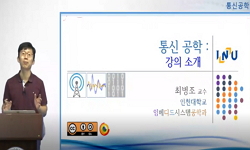Errors, as a part of foreign language learning process, are natural, inevitable and necessary. It shows that the learners are in the transitional stage of grasping the target language. However, we should identify the cause and analyze the errors timel...
http://chineseinput.net/에서 pinyin(병음)방식으로 중국어를 변환할 수 있습니다.
변환된 중국어를 복사하여 사용하시면 됩니다.
- 中文 을 입력하시려면 zhongwen을 입력하시고 space를누르시면됩니다.
- 北京 을 입력하시려면 beijing을 입력하시고 space를 누르시면 됩니다.
부가정보
다국어 초록 (Multilingual Abstract)
Errors, as a part of foreign language learning process, are natural, inevitable and necessary. It shows that the learners are in the transitional stage of grasping the target language. However, we should identify the cause and analyze the errors timely and accurately, so that we can solve the problem and the students will not repeat the same mistake.
The paper concentrates on ninety compositions of thirty Korean learners of Chinese at higher and middle levels. The methods of Contractive Analysis, Error Analysis and the theory on Inter-language in second language teaching are adopted in this paper so as to sum up the types of errors with detailed analysis of the cause of their formation.
This paper maintains that the errors committed by Korean students can fit into the following three categories: error of omission, error of addition and error of word order.
Those errors, which are often seen in Korean students’ compositions, are caused by two main reasons: First, the negative transformation of the mother tongue. Chinese and Korean vary greatly, not only in basic word order but also in many other aspects. For example, there are a great number of quantifiers in Chinese and many nouns have their own unique quantifier, which must be properly used or will lead to errors. However, in Korean, there are also quantifiers, but nowhere near the number of Chinese. In many cases, the quantifiers can be omitted in Korean. Therefore the negative transformation of the mother tongue causes the error of omission in their compositions.
The second main reason: insufficient knowledge of Chinese distracts the learning of new grammatical rules. For example, those Korean learners of Chinese at higher and middle levels basically know that “Le”(Chinese aspectual particle), should be used after the verb, mainly showing the action is completed. Although in Chinese, “Le”(Chinese aspectual particle), a kind of grammatical symbol suffix, must be used flexibly. In some cases, it must be used and in other cases, it mustn’t. Korean students who have not fully grasped its usage will lead to this kind of abused errors.
Therefore, on one hand educators who teach Chinese as a foreign language must fully grasp Chinese grammatical rules and explain them comprehensively; On the other hand, they should also distinguish the similarities and differences between Korean and Chinese so that the errors can be corrected timely.
다국어 초록 (Multilingual Abstract)
“偏误”是外语学习过程中的一个部分,是极其自然的现象,是不可避免的,也是必需的,这表明学习者正在从不会到掌握语言的过渡阶段。但出现偏误之后,应及时、准确地找出偏误的原...
“偏误”是外语学习过程中的一个部分,是极其自然的现象,是不可避免的,也是必需的,这表明学习者正在从不会到掌握语言的过渡阶段。但出现偏误之后,应及时、准确地找出偏误的原因并加以分析,才能从根本上解决偏误问题,从而使学生们不再重蹈覆辙,出现同样的错误。本论文以30名具有中高级汉语水平的韩国学生的90篇作文为语料,结合第二语言教学研究中适用的对比分析、错误分析及中介语理论,将学生们的偏误分为遗漏、误加、错序三种类型,对学生们的偏误进行了具体分析,找出了导致偏误的根由。通过分析,笔者发现韩国学生在作文当中最容易出现的偏误主要是遗漏偏误、误加偏误及错序偏误。究其原因,主要有以下两点:第一,母语负迁移的影响。汉语与韩语不仅在基本语序上存在差异,而且在其他诸多方面都有不同之处。比如,在汉语中,量词十分发达,很多名词都有自己特有的量词,若在此时使用其他量词,则容易出现偏误。而在韩语中,虽然也有量词,但其数量远不及汉语量词多,且在很多情况下可以省略,因此,受母语负迁移的影响,很多学生会在作文当中漏掉量词而出现遗漏偏误。第二,已经掌握的不完全的汉语知识对学习新的语法现象的干扰。例如,汉语水平达到中高级的韩国学生基本上都知道“了”作为动态助词时,用在动词后,主要表示动作的完成。但是汉语中的“了”虽是一个带有语法标志性的词尾,但并不是完全意义上的标志,使用起来有很大的灵活性,有时候一定要用,有时候一定不能用。韩国学生由于没有完全掌握其用法,结果则导致该用不用、不该用而滥用的偏误现象。因此,这就要求从事对韩汉语教学的教育者一方面要全面掌握汉语语法,做到讲解全面、周到;另一方面也要掌握韩语与汉语的异同之处,以便学生在出现母语负迁移时及时给予纠正。
참고문헌 (Reference)
1 陈维昌, "韩国学生作文中遗漏和误加偏误类型分析" 28 (28): 2006
2 中国社会科学院语言研究所词典编辑室, "现代汉语词典" 商务印书馆 2012
3 吕叔湘, "现代汉语八百词" 商务印书馆 1981
4 吕叔湘, "现代汉语八百" 商务印书馆 2003
5 罗民等, "新汉语水平考试(HSK)海外实施报告" (4) : 2011
6 戴炜栋, "对比分析、错误分析和中介语研究中的若干问题——外语教学理论研究之二" (5) : 1994
7 刘月华, "实用现代汉语语法" 商务印书馆 2003
8 鲁健骥, "外国人学汉语的语法偏误分析" (1) : 1994
9 佟彗君, "外国人学汉语病句分析" 北京语言学院出版社 1986
10 李大忠, "外国人学习汉语语法偏误分析" 北京语言文化大学出版社 1997
1 陈维昌, "韩国学生作文中遗漏和误加偏误类型分析" 28 (28): 2006
2 中国社会科学院语言研究所词典编辑室, "现代汉语词典" 商务印书馆 2012
3 吕叔湘, "现代汉语八百词" 商务印书馆 1981
4 吕叔湘, "现代汉语八百" 商务印书馆 2003
5 罗民等, "新汉语水平考试(HSK)海外实施报告" (4) : 2011
6 戴炜栋, "对比分析、错误分析和中介语研究中的若干问题——外语教学理论研究之二" (5) : 1994
7 刘月华, "实用现代汉语语法" 商务印书馆 2003
8 鲁健骥, "外国人学汉语的语法偏误分析" (1) : 1994
9 佟彗君, "外国人学汉语病句分析" 北京语言学院出版社 1986
10 李大忠, "外国人学习汉语语法偏误分析" 北京语言文化大学出版社 1997
11 韩志刚张文贤, "HSK语法指要与训练" 北京大学出版社 2004
동일학술지(권/호) 다른 논문
-
- 동아인문학회
- 孟?(Meng Wei)
- 2014
- KCI등재
-
중국어 ‘S把OV’文과 한국어 ‘SOV’文의 對應關係分析
- 동아인문학회
- 朴愛華(Park Ai Hua)
- 2014
- KCI등재
-
- 동아인문학회
- Hyo-Chang Hong(홍효창)
- 2014
- KCI등재
-
- 동아인문학회
- ??均(Liu Xingjun)
- 2014
- KCI등재
분석정보
인용정보 인용지수 설명보기
학술지 이력
| 연월일 | 이력구분 | 이력상세 | 등재구분 |
|---|---|---|---|
| 2027 | 평가예정 | 재인증평가 신청대상 (재인증) | |
| 2021-01-01 | 평가 | 등재학술지 유지 (재인증) |  |
| 2018-01-01 | 평가 | 등재학술지 선정 (계속평가) |  |
| 2017-12-01 | 평가 | 등재후보로 하락 (계속평가) |  |
| 2013-01-01 | 평가 | 등재학술지 선정 (등재후보2차) |  |
| 2012-01-01 | 평가 | 등재후보 1차 PASS (등재후보1차) |  |
| 2011-01-01 | 평가 | 등재후보학술지 유지 (등재후보2차) |  |
| 2010-01-01 | 평가 | 등재후보 1차 PASS (등재후보1차) |  |
| 2009-01-01 | 평가 | 신청제한 (등재후보1차) |  |
| 2008-01-01 | 평가 | 등재후보학술지 유지 (등재후보2차) |  |
| 2007-01-01 | 평가 | 등재후보 1차 PASS (등재후보1차) |  |
| 2005-01-01 | 평가 | 등재후보학술지 선정 (신규평가) |  |
학술지 인용정보
| 기준연도 | WOS-KCI 통합IF(2년) | KCIF(2년) | KCIF(3년) |
|---|---|---|---|
| 2016 | 0.24 | 0.24 | 0.24 |
| KCIF(4년) | KCIF(5년) | 중심성지수(3년) | 즉시성지수 |
| 0.23 | 0.24 | 0.507 | 0.02 |




 KCI
KCI



